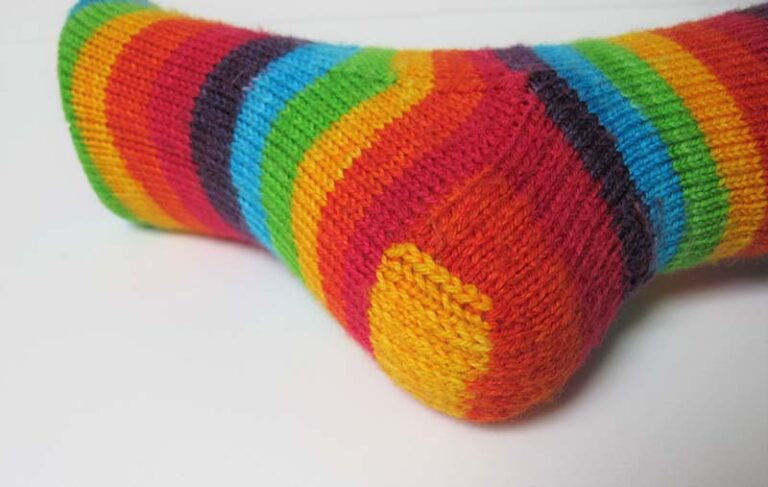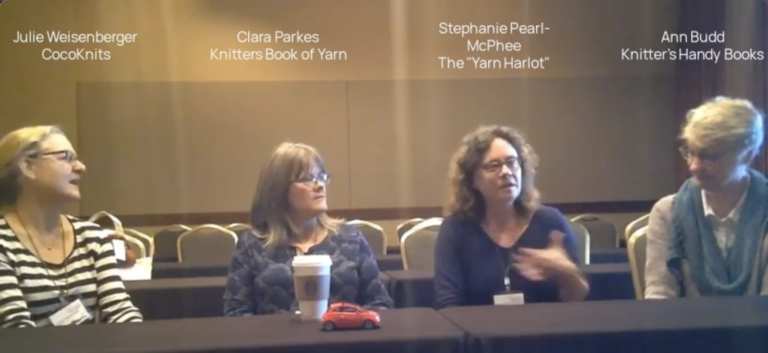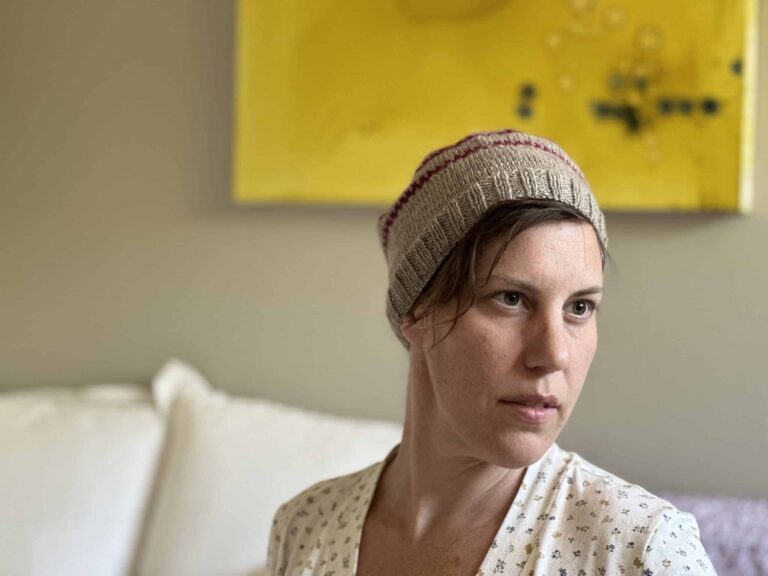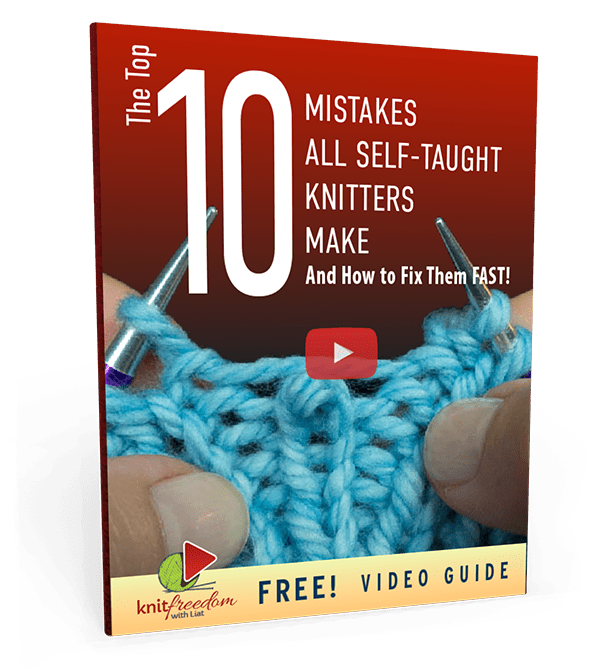 In yesterday’s post I asked you to think about where you would like to be with your knitting one year from today.
In yesterday’s post I asked you to think about where you would like to be with your knitting one year from today.
If you struggled to answer, or if you couldn’t quite come up with the right kind of project for you to knit next, I have just the thing to help.
It is a way of thinking called the 3-Challenges Model that I created to help my students knit what is most rewarding for them.
The goal: pick something that is just a tiny bit more challenging than what you feel comfortable doing right now.
This puts you in a state of what psychologists call FLOW, which means you can get totally absorbed in the project and be learning happily while you knit, and you don’t get overwhelmed because the project is too hard or bored because it’s too easy.

In my next post I’ll give you a great visual guide you can refer to, but today I’m going to teach you to tell how difficult a project is just by looking at the pattern.
Since most yarn stores don’t organize their sample projects by difficulty or techniques required, you’ll have to walk up to the project that catches your eye and ask to take a look at the pattern.
Choose one or two of the following challenges:
Challenge #1 – Patience
When you look at a pattern, notice how long and/or dense is is. Scan over the whole thing to see how many steps it has.

Maybe it’s all techniques that you already know, but it’s three pages long — maybe it’s just three pages of knits and purls in different combinations.
It would challenge your patience to approach a long, multi-step pattern like this and, knowing that you already know the “moves” involved, to just take it one step at a time, being careful to write down where you are and to cross off or highlight what you’ve done so you don’t get lost.
Challenge #2 – Knowledge of Knitting Abbreviations
Look over the Abbreviations section in your pattern and see if you know the meanings of the abbreviations there by heart. If you don’t, as long as there aren’t like 20 new abbreviations, this will be a good opportunity for you to add more “words” to your vocabulary as you study of the language of knitting.

As you knit, approach any abbreviation that you don’t know as if you were learning a foreign language – maybe ask a friend and/or look the word up in a trusted dictionary. (You could spend time Googling it, but I’ll give you a faster solution below.) Try to memorize the new abbreviations as you go so next time you won’t have to look them up.
For example, if I see a “K1, M1,” I know that the M1 stands for Make One, the invisible left-leaning increase. If I’m reading aloud, I’m going to say to myself, “Knit One, Make One,” not “Knit One, Em One.”
Saying the full name of the technique as you knit will help you tell your brain what it is that you actually need to do.
To help you look up knitting abbreviations quickly and easily, (and to save you time becoming an expert at Googling) I’ve completely overhauled and updated my free Video Knitting Dictionary – download it at the end of this post.
Challenge #3 – Challenge Your Hands
If your pattern calls for techniques that you’ve never done before that involve you manipulating the yarn in a new way, you can consider this a good challenge for your hands.

Maybe you’ll need to make a hemmed edge, or make a bobble, or do a Pick Up and Knit. Anything that’s a little tricky for your hands the first time you try it will be a good challenge to increase your skills.
The Key To Success When Selecting Any Knitting Pattern: Choose Your Battles
Pick one or two of the above challenges to work on — don’t attempt all three at the same time. You may know from experience that you’ll just end up wasting yarn and giving yourself a headache and, although I hope not, questioning your knitting abilities (more on that in a few days!).
While you’re thinking on this, I’ll be back in a few days with a tool I invented – the Tree of Techniques.
It’s an easy visual way for you to see which projects are best for you based on what you what you’ve knitted in the past and where you want to go.
Leave a Comment
What do you think of this way of breaking down challenges? Do you use something similar? Have you come up with another way of challenging yourself without getting overwhelmed? What advice do you give to your friends?
Leave a comment and let me know!










4 thoughts on “The 3 Decisions You Have When Choosing a New Project”
Thank you so much for the Tree of Technique! What a great way of deciding on a new project and not biting off more than you can chew or getting stuck in arut. I will be looki g forward to all you can teach me! Susan in Texas
Thanks so much Susan! Hope this helps you decide the next best project for you :)
Cheers from Your Fellow Texan,
Mary Claire
I am a Lisa Gat Superstar! Very proud to be. I have learned how to fix my mistakes but I want to be able to make a knit and purl a project large or small without having made so many mistakes along the way. Patience is my key to success and keeps me knitting every day. I want to be able to knit socks either on DPNs or your Magic Loop way, which appears to me to be the easiest. I am not of fan of DPNs and try to do every project with circular needles if required. Keep up with the Knitting Knowledge emails, I love them and save them in a very safe place on my computer.
Thanks!
Jeanette
Hiya Liat,
Thank you so much for your surprise (which I have been looking forward to ever since you mentioned it) I love the Tree of Techniques, I am a very visual learner so this way of explaining helps me a lot, I have also realised that I am better at knitting (or at least have more knowledge) than I realised.
Again thank you from a very happy knitter ;-)